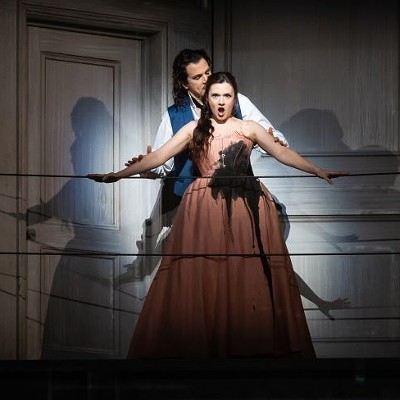Is Western Classical music dead? If yes, when did it die? Was there a funeral? Writer Joseph Horowitz describes in his book Classical Music in America: A History of Its Rise and Fall a "culture of performance" that began in the early part of the 20th century, possibly as the result of some kind of extraterrestrial mind control experiment, which defined itself by instigating repeated and "immaculate performances" of 18th and 19th century European classics. For reasons that were dubious to begin with, this culture of music directors, conductors, and orchestras decided that playing Beethoven's Symphony No. 5 in C Minor over and over and over again, year after year after year was not only a healthy thing for the arts, but a monetary guarantee. Time has proved that neither is true.
As boring as it may be to sit down for yet another performance of a Beethoven symphony, the European canon and Horowitz's culture of performance does give American musicians something to react against. Perhaps without these recurring immaculate performances, we wouldn't have as much creative music as we do here in the U.S. In nearly every genre of American music, there are irreverent and even iconoclastic rearrangements of "warhorses" composed across the ocean one or two centuries ago. Here are a few classy examples of what we're talking about:
Ellington, Strayhorn, and Tchaikovsky
Recorded for and released by Columbia records in 1960, Duke Ellington and Billy Strayhorn's The Nutcracker Suite is one example of the many "suites" the two composed over the years, including suites paying tribute to William Shakespeare, John Steinbeck, and Queen Elizabeth II. Pyotr Ilyich Tchaikovsky's Nutracker Suite was "world music" before that term existed. Rhythms and melodies from his native Russia, China, the Middle East, and Italy are featured throughout the score, and no doubt Ellington and Strayhorn heard all of that and more. They co-created several humorous and hip versions of the various movements from Tchaikovsky's suite, a great example being their take on the "Arabian Dance" which they retitled "Arabesque Cookie." Interestingly, this track is used in Spike Lee's powerful film about the life of Malcolm X, X:
Ellington and Strayhorn's reimagining of this warhorse of classical ballet music (Has anyone out there stayed awake for the duration of the entire ballet? Let us know...) allows our contemporary ears to hear the music as it must have sounded to audiences way back in the day: fresh, exotic and fun.
Ray Conniff, Reverb, and the Ghosts of Dead Composers
Your grandma probably has a Ray Conniff record or two stashed away in the attic. Conniff's recorded output ranges from kind of boring to breathtakingly weird. The first people to really experiment with the possibilities of the recording studio as a compositional tool weren't The Beatles, or mysterious composers with scary names like Ussachevsky or Gelmetti. No, it was composer/arranger/producers like Ray Conniff, unfairly lumped into the much-maligned "easy listening" category, who made the first attempts to push the limits of recording and playback technology.





